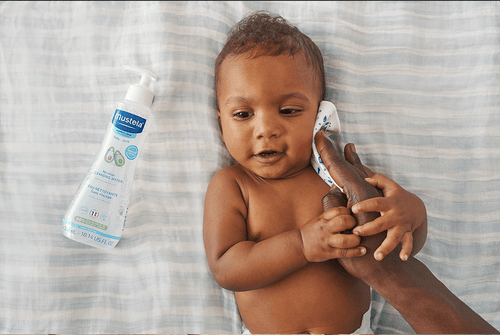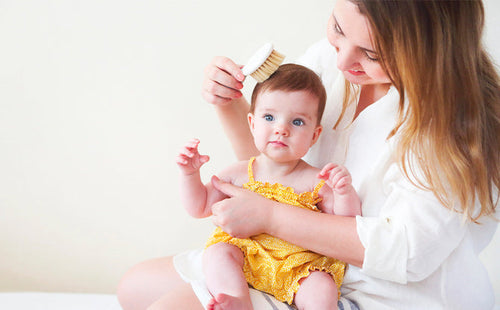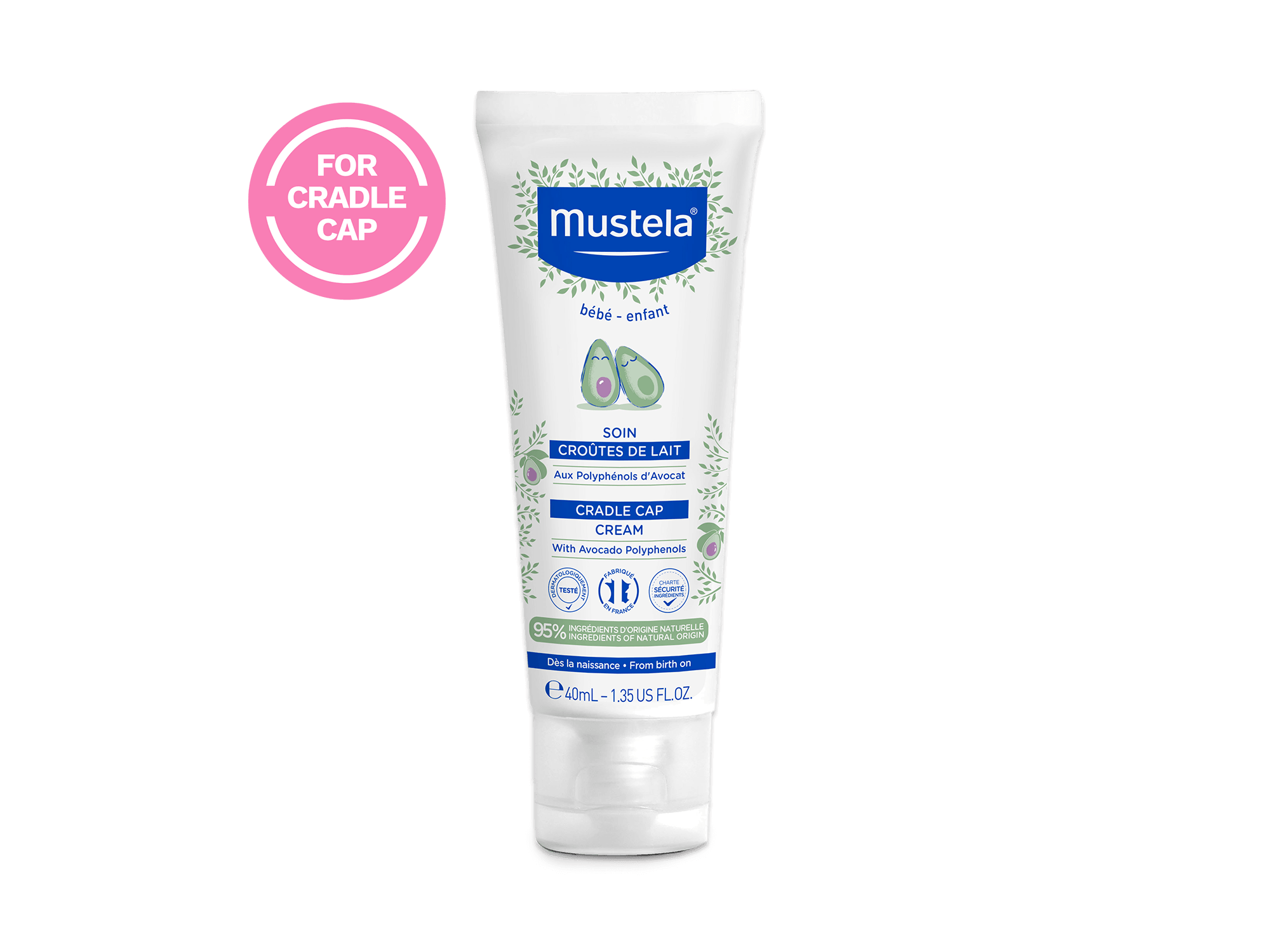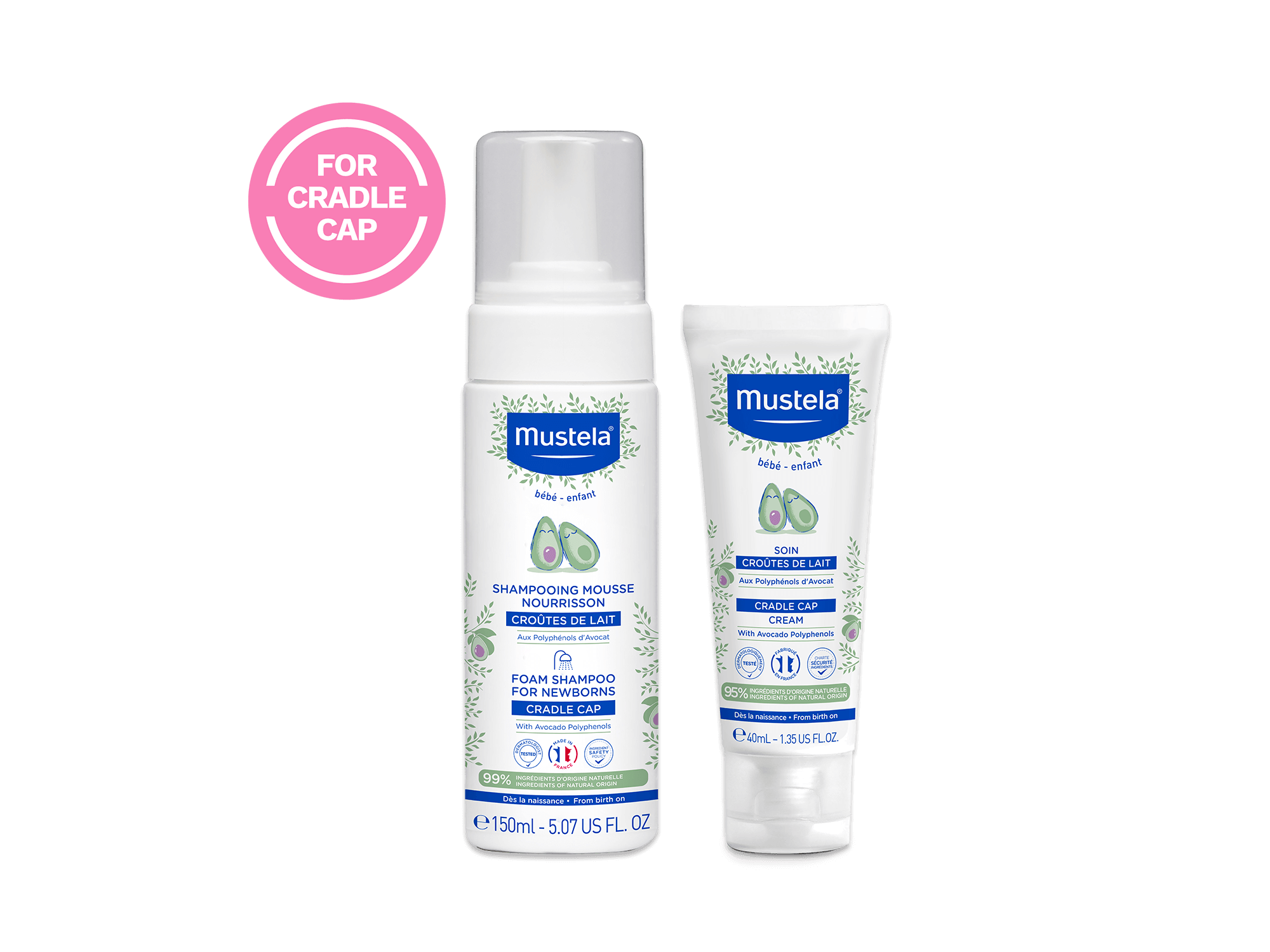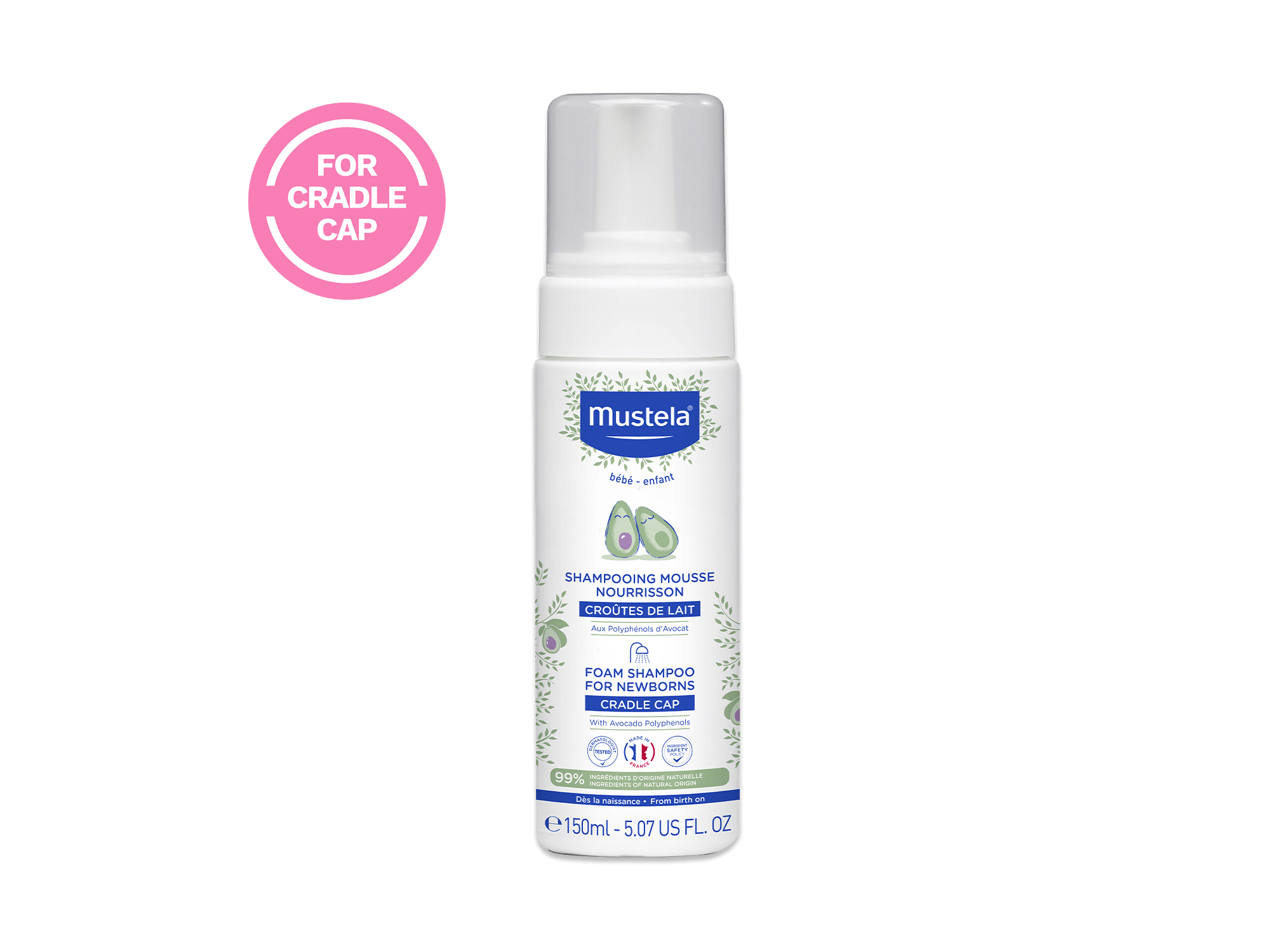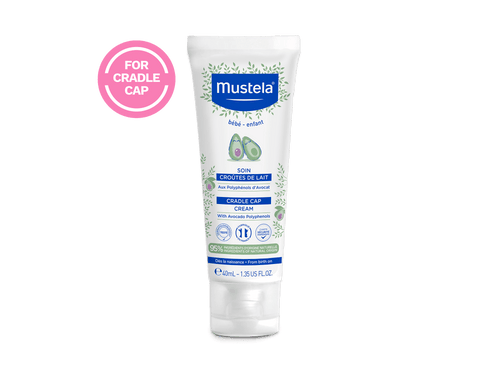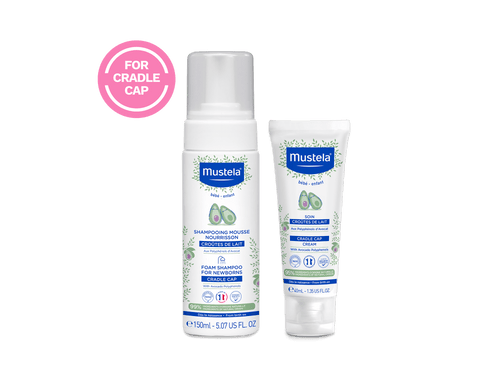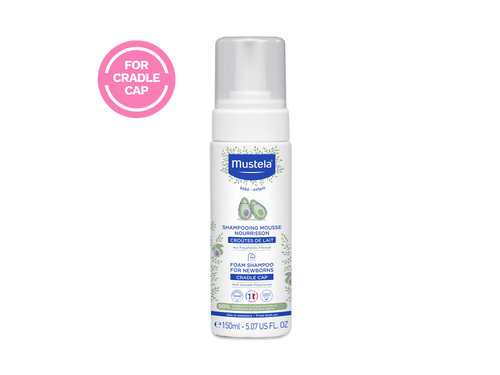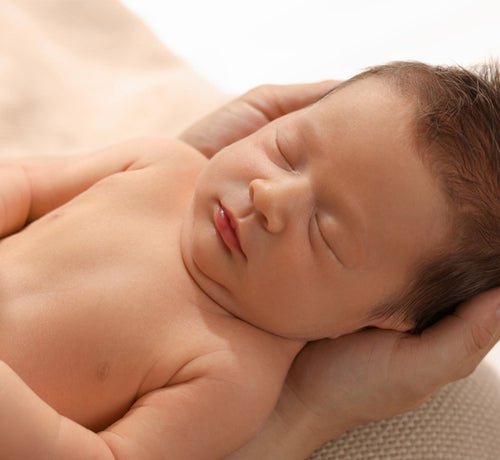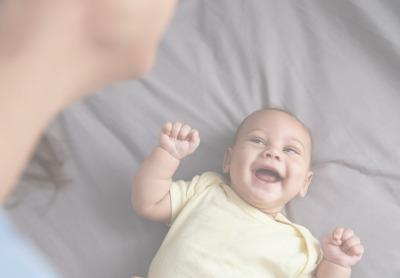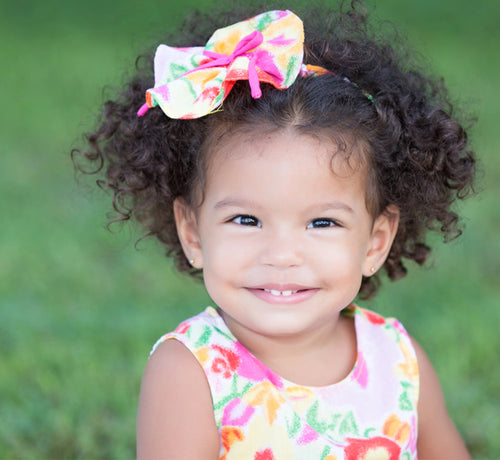Whether it’s a thick mop of curls or it’s just barely there, you want to keep your baby’s hair healthy, clean, and stylish. So what baby hair products should you use to wash and style your little one’s hair?
In this article, we’ll share the 12 best baby hair products for all hair types so your baby can have a good hair day every day.
Key Takeaways
- The types of baby hair products you’ll need depend on your baby’s hair type and scalp condition. Common hair types include straight, wavy, curly, coiled or kinky, and no hair. Common scalp conditions include sensitive skin, eczema, and cradle cap.
- When shopping for baby hair products, look for things like a tear-free formula, gentle cleansers, plant-based ingredients, moisturizing ingredients, ph-balanced formulas, and hypoallergenic formulas.
- Some of the best baby hair products include all-in-one hair and body wash, organic shampoos, detangling shampoo, leave-in conditioner, styling spray, fragrance-free hair gel, detangling spray, shampoo products for eczema, cream products for cradle cap, cradle cap brush, soft-bristled styling brush, and rounded detangling comb.
Baby Hair Types
Babies are born with all different types of hair — thick and curly, pin straight, or just a little fuzz.
And just when you think you know how to care for their hair texture and style, it changes. That’s right; babies lose and regrow their hair during the first six months. What’s straight now becomes curly; what used to be bald is now thick and textured.
The thing is, different hair types will require different care, so before you decide what routine and products will work for your baby, you should determine their hair type. Let’s take a look.
Straight Hair
Some babies sport pin-straight hair that can be thick or fine. Straight hair is usually pretty easy to brush and maintain.
Wavy Hair
Your little one’s mane might instead be wavy — falling into an “S” shape. It could be wavy from the scalp down or from the midpoint down.
Curly Hair

Some babies’ hair grows in springy ringlets or curly corkscrews. Their curls can be loose or tight, lay flat on the scalp, or stand up.
Coiled Or Kinky Hair
Your baby may also have coiled or kinky hair, which looks exactly like it sounds. This hair type may be the most difficult to care for.
No Hair
Of course, your baby might instead be “follically challenged” at the beginning, with nearly no hair at all. But, as we said, this can (and probably will) change in the first six months.
Common Baby Scalp Conditions
When considering hair care products for your little one, you also want to think about your baby’s scalp. Is their skin extra-sensitive, or does your little one suffer from skin conditions like eczema or cradle cap?
If so, you’ll need to be even more careful when choosing hair care products.
Sensitive Skin
Babies’ skin is always sensitive, but extra sensitive skin requires extra attention. If your baby has a skin reaction after a bath with soap, after lotion’s applied, or just by getting wrapped in a swaddle thanks to a detergent or dye, their skin falls into the “sensitive” category.
Eczema
Eczema is a skin condition that causes dry and itchy skin patches that can appear anywhere on the body, including the scalp. It’s very common for children to get eczema, although, on the bright side, it often resolves itself as the child gets older.
If your child has eczema-prone skin, opt for specific products formulated with the condition in mind.
Cradle Cap
Cradle cap is another common skin condition that affects babies. It causes oily, scaly patches on the scalp. Although it normally clears up on its own, you can help it along with a gentle daily shampoo, special creams, and a cradle cap brush to loosen scales.
When To See A Doctor
While the baby hair and scalp issues mentioned above are normal, there are times you should talk to a doctor.
Red, Itchy, Weeping Skin
If your baby’s scalp is very red, looks infected, or is weeping (has fluid coming out of it), it’s time to call your pediatrician. These issues could be a sign of a more serious skin condition or an infection that needs proper medical care.
Severe Cradle Cap
Cradle cap is usually harmless and goes away on its own. But, if the scaly patches are very thick, cover a large area, or don't get better with gentle washing and a special cream, a doctor can give you tips or prescribe a stronger treatment.
Hair Loss
Some babies will lose some or all their hair in the first six months as their body adjusts to life outside the womb.
But, if your baby starts or continues losing their hair after this time or their scalp looks inflamed or bumpy, get them checked out by a pediatrician.
What To Look For In Baby Hair Care Products

As you’re putting together your hair care kit, here are some labels and ingredients that you will want to look for.
Tear-Free Formula
Baby’s sure to be a little squirmy when they’re getting their hair washed. Find a formula that’s tear-free to avoid irritating their eyes.
Gentle Cleansers
Cleansers in your baby shampoo should be extra gentle and fragrance-free. You don’t want to use any harsh chemicals on delicate baby skin.
Plant-Based Ingredients
Look for plant extracts like coconut, chamomile, aloe, avocado oil, or sunflower.
Moisturizing Ingredients
Dry scalp be gone! Products should have ingredients that moisturize your little one’s hair and scalp.
pH-Balanced Formulas
You’ll also want to opt for pH-balanced formulas — this balance is essential for maintaining the health of your little one’s scalp and hair.
Hypoallergenic Formulas
Of course, you don’t want your baby to suffer any allergic reaction or interact with any harmful chemicals, so reach for products that are hypoallergenic. Hypoallergenic products are free of parabens, phthalates, formaldehyde, fragrance, sulfates, and alcohol.
12 Best Baby Hair Products

So, what should be in your baby’s bathtime kit? Here are some products that we think are musts.
1) All-In-One Hair & Body Products
One of our favorite hair care picks is the product that does it all. Look for baby body washes that do double duty as shampoo as well, making bathtime easy-peasy.
Mustela Gentle Cleansing Gel is a newborn-friendly, tear-free cleanser that can be used on baby’s hair and body. It’s made with 93% ingredients of natural origin per ISO 16128 standard, including Avocado Perseose® and Vitamin B5.

2) Organic Shampoo
An organic baby shampoo can give you the peace of mind that you’re not exposing your little one to any chemicals or pesticide residue.
Mustela Organic Cleansing Gel with Olive Oil and Aloe is a tear-free, fragrance-free option, made with 93% ingredients of natural origin per ISO 16128 standard. Formulated for both hair and body, this wash does it all, cleansing without stripping natural oils while hydrating the scalp and skin.
3) Detangling Shampoo
If your little one’s hair tangles easily — particularly an issue for curly, kinky, and coily hair — it’s a good idea to stock your bathroom with a detangling shampoo.
Our Detangling & Nourishing Cream Shampoo is a top choice for textured hair that’s prone to tangle — we’re looking at you long, wavy, and curly hair! With 96% ingredients of natural origin per ISO 16128 standard, including shea butter and avocado oil, it will even define curls and reduce frizz.
4) Leave-In Conditioner
Although for certain types of hair, conditioner isn’t necessary yet, for babies with coiled or kinky hair, leave-in conditioner is recommended to keep their hair healthy and hydrated.
Plan for a little extra time on baby’s hair care routine just once a week.
5) Styling Spray
If you want to get that mohawk to stand up or that cowlick to stand down, you might want to try a styling spray. Mustela Hair Styler & Skin Freshener both refreshes and moisturizes baby’s skin and styles their hair in an on-trend ‘do.
6) Fragrance-Free Hair Gel
Another top pick for styling baby’s hair is a fragrance-free hair gel. Be sure to choose one made for babies specifically, as adult formulas may contain harsh ingredients.
7) Detangling Spray
If your little one’s mane is prone to tangling, you might invest in a detangling spray as well. Then, if tangles happen on the go, you’re ready for them.
8) Shampoo Products For Eczema
If your baby suffers from eczema, you’ll want to choose skin products that are made for children with the condition, are clinically tested on eczema-prone skin, and are recognized by the National Eczema Association.

Mustela Stelatopia Foam Shampoo is one such product, specially formulated for babies with eczema-prone skin. The tear-fee and pH-balanced formula uses Sunflower Oil Distillate to moisturize and Avocado Perseose ® to protect and strengthen baby’s skin.
9) Cream Products For Cradle Cap
If your little one has cradle cap, you’ll want to get a cream that can help soothe the condition.
Mustela Cradle Cap Cream keeps your baby’s scalp moisturized and flake-free. It even helps lessen the likelihood of the condition recurring in the future.
10) Cradle Cap Brush
In addition to the cream, using a special cradle cap brush can help dislodge the scales on your baby’s scalp. We like the silicone brushes because they’re extra gentle and easy to clean.
11) Soft-Bristled Styling Brush
Another must-have for your little one’s hair care kit is a soft-bristled styling brush, preferably in boar or goat hair.
12) Rounded Detangling Comb
And to round things out, a rounded detangling comb will help you keep your little one’s tresses tangle-free gently and painlessly.
How To Care For Your Baby’s Hair And Scalp
Knowing your baby’s hair type, scalp conditions, and the baby hair products you’ll need to keep them healthy is the first step to a great hair and skincare routine.
Let’s get into the specifics of how to wash and style your baby’s hair.
Straight And Wavy
Straight and wavy hair are often the easiest to care for. Because the hair strands are smooth, they don't tangle as easily. And, the natural oils from the scalp can travel down the hair shaft, which helps keep the hair and scalp moisturized.
Washing
A simple, gentle baby shampoo is usually all you need. Since straight and wavy hair doesn’t get as tangled, you can use an all-in-one hair and body wash.
Wash your baby's hair two to three times a week, but no more, so that you don’t dry out the scalp and hair, which can cause irritation or other issues.
Styling
For straight hair, use a soft-bristled brush to gently put their hair in place. If you need to tame a stubborn cowlick or want to create a spiky look, a styling spray or fragrance-free gel will do the trick.
For wavy hair, use a detangling comb to help get rid of any small knots after a wash. To style wavy hair, use the same styling spray or fragrance-free gel that you would use for straight hair.
Keep in mind, though, that wavy hair is often more difficult to style than straight hair so don’t get bent out of shape if it’s not perfect.
Curly, Coiled, And Kinky Hair
Curly, coiled, and kinky hair often needs a little extra attention to stay healthy. Why?
Because the natural oils from the scalp have a harder time traveling down the twists and turns of the hair, which can lead to dryness. This dryness makes the hair more prone to tangles and breakage.
Washing
For curly, coiled, and kinky hair, use a moisturizing shampoo, detangling shampoo, or consider trying one specifically made for textured hair.
As for frequency, wash curly, coiled, or kinky hair less often than you would straight or wavy hair. Once or twice a week is usually plenty.
After washing, a leave-in conditioner can work wonders. It locks in moisture and keeps the hair soft and manageable.
Styling
For curly, coiled, and kinky hair, a rounded detangling comb is a must-have. Don't try to brush or comb their hair when it's dry; always do it when it's wet and has conditioner in it. Start at the ends and work your way up to the roots to gently get rid of tangles.
For styling, a detangling spray or a little leave-in conditioner can help define curls and keep them from getting frizzy.
Hair Care And Bathtime Go Hand In Hand

When your baby is still young, much of their hair care occurs during and after a bath. So, it’s important to make bathtime fun and safe for your little one so you can use baby hair products without complaint.
Here are some tips for an enjoyable bathtime.
Make Sure The Air And Water Are Warm
You don’t want your little one getting a chill so make sure the air and water are warm.
Before putting your baby in the bath, close the bathroom door, run hot water in the tub, and let the steam raise the air temperature. Be sure to make sure the water has cooled off enough before putting your baby in the bath.
Keep Everything Within Arm’s Reach
Before bringing your baby to the bath, place everything you’ll need within arm's reach. That includes things like the shampoo, a washcloth, a towel, and some fun bath toys.
That way, you never have to turn your back on your baby.
Wash And Rinse Their Hair The Right Way
When it’s time to wash their hair, use a small amount of product. You don't need a lot!
Gently massage the shampoo into their scalp with your fingertips, using soft, circular motions. This feels nice for them and also helps clean the scalp.
Of course, you’ll want to use a “tear-free” shampoo, but it’s still best to keep soap and water out of their eyes by gently tilting their head back while you rinse.
Use a washcloth to wipe the soap away from their face and consider using a special rinsing cup with a soft edge to direct the water away from their eyes.
Take Care After The Bath
Once bathtime is over, wrap your baby in a soft towel and gently pat their hair and scalp to dry it. Avoid rubbing their hair with the towel as that can cause tangles and even damage their delicate hair.
After your baby’s dry, use the products mentioned in this article to style and care for their hair.
Healthy Hair With Mustela

Now that you know some of the best baby hair products for your little one’s bathtime and beauty routine, you can select the right assortment for your baby’s hair type.
Our bestselling Gentle Shampoo is an all-around favorite as it’s mild and hydrating with ingredients like chamomile extract and Avocado Perseose®. Follow it up with our Hair Styler & Skin Freshener if you’d like to tame the mane into a special ‘do.
With Mustela hair care products, you can rest assured your baby’s got great hair days ahead, guaranteed!
Frequently Asked Questions
Can I use adult hair products on my baby?
It’s not typically a good idea to use adult hair products on your baby because their hair and scalp are much more delicate and sensitive than yours.
Adult products can contain harsh chemicals, fragrances, and sulfates that can strip natural oils, cause irritation, or lead to allergic reactions.
Stick to baby hair products until you’re sure your little one doesn’t have allergies or sensitivities. And don’t feel like you have to rush to switch. Many adults still use baby shampoo, so it’s perfectly OK to keep using baby shampoo and other products well into their teens and older.
If you are thinking about switching, try a small amount of the adult product on a small patch of their hair and scalp. If they don’t have any allergic reactions, try it on their whole head next time around.
If they develop an allergic reaction, you can always go back to the baby product.
How often should I wash my baby’s hair?
You generally don't need to wash a baby's hair every day. Two to three times per week is often enough.
However, this can vary based on your baby's hair type. For example, babies with very dry or curly hair may benefit from less frequent washing to avoid stripping natural oils.
What should I consider before using a new product on my baby?
Before using a new hair product on your little one, always consider your little one’s specific needs. What is their hair type? Do they suffer from eczema or sensitive skin? Have they developed cradle cap?
With those things in mind, read the ingredients list to ensure that the product is free of harsh chemicals that could worsen their condition.
Then, do a small patch test on your baby’s hair and skin to check for any allergic reactions. If they don’t present anything, try the product on their whole head.

